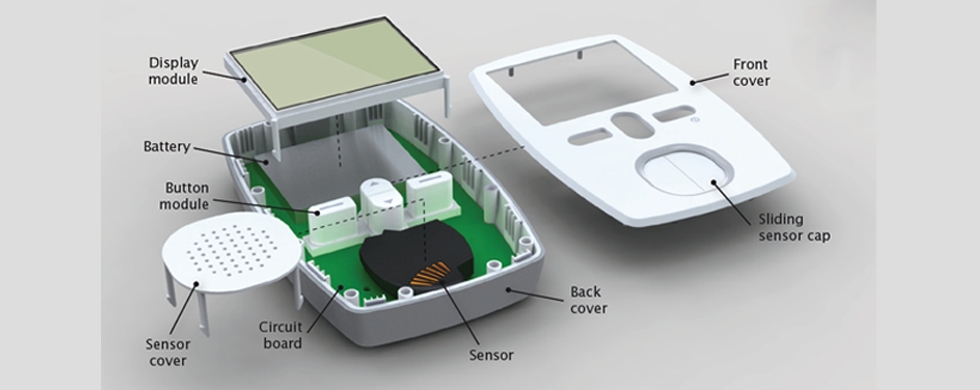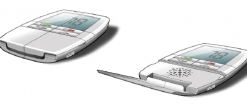Monitoring Diabetes
Development of a handheld meter for monitoring of diabetes using exhaled air with focus on product design and human-machine interface.
Summary
This master thesis project is a part of the examination of the master programme Industrial Design Engineering at Chalmers University of Technology, and it is a full time 20 weeks project. The project is made in collaboration with Imego Ab, which is a research institute of micro- and nanotechnology, located in Gothenburg, Sweden.
Diabetes has become a widespread national disease, and it is increasing around the world. Often, it requires a lifelong injection of insulin, in order to keep the blood glucose within safe and stable levels. Until now, the testing of blood glucose is done using daily finger pricking, which is considered as uncomfortable, painful and time-consuming. As a result, ugly stick marks and calluses are created, and the finger sensibility is impaired. In addition, the test strips (and the needles) are expensive. As a result, it has been proposed that measuring of human breath can be used as a cheap and non-invasive (means that no brake into skin is created) alternative to monitor diabetes. First, acetone in exhaled air can be used to predict diabetic ketoacidosis. It is a life-threatening condition that requires immediately medical care, which comes out of high levels of blood glucose for a longer period of time. Second, studies have shown that it might be possible to estimate blood glucose levels via multiple breath gas analysis of exhaled air. Therefore, the project task was to develop a handheld meter for monitoring of diabetes using exhaled air, with the starting point of a sensor developed by Imego Ab, used to measure gases. The focus areas for the thesis were on product design and human-machine interface, which in details means product semiotics, ergonomics/handling and usability and so on. The project started with an analysis phase, among other an interview study with seven diabetics. Next, two basic concepts were developed, including seven variations. The concepts were evaluated against the requirement specification, and together with feedback from Imego Ab, one concept were decided to develop further, into a final concept. An empirical evaluation study, with simple physical models, was used to develop the final concept. The outcome of the project is a final meter, which in the future will facilitate and simplify the life for many diabetics. The product design of the final meter is characterized by the desired semantic expressions of simple, clean, robust & reliable. It is visualized with help of renderings and pictures, as well in a physical mock-up that was built in Alias StudioTools, and then printed in 3D. Furthermore, the project outcome is a human-machine interface, developed in Flash, based on a set of design guidelines.
Skriv ut ![]()


